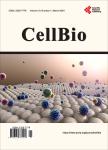Manifestation of Key Molecular Genetic Markers in Pharmacocorrection of Endogenous Iron Metabolism in MCF-7 and MCF-7/DDP Human Breast Cancer Cells
Manifestation of Key Molecular Genetic Markers in Pharmacocorrection of Endogenous Iron Metabolism in MCF-7 and MCF-7/DDP Human Breast Cancer Cells作者机构:Department of Mechanisms of Antitumor Therapy R.E. Kavetsky Institute of Experimental Pathology Oncology and Radiobiology NAS of Ukraine Kyiv Ukraine
出 版 物:《CellBio》 (细胞生物学(英文))
年 卷 期:2013年第2卷第4期
页 面:217-227页
学科分类:1002[医学-临床医学] 100214[医学-肿瘤学] 10[医学]
主 题:Nanocomposite Iron Metabolism Apoptosis ROS Drug Resistance Breast Cancer Cells
摘 要:Effects of the nanocomposite and its components (magnetic fluid, cisplatin) on the level of endogenous iron exchange and the key links of genetic and epigenetic regulation of apoptotic program of sensitive and resistant MCF-7 cells were examined. We showed genetic and epigenetic mechanisms of action of nanocomposite of magnetic fluid and cisplatin. Nanocomposite caused elevation of number of cells in apoptosis in sensitive and especially resistant MCF-7 cells compared to cisplatin alone. It was proved that impact of nanocomposite on MCF-7/S and MCF-7/DDP cells caused more significant changes in expression of apoptosis regulators p53, Bcl-2 and Bax. We also suggested that changes in endogenous iron homeostasis and activation of free radical processes caused significant impact on apoptosis. Those changes included changes in methylation and expression of transferrin, its receptors, ferritin heavy and light chains (predominantly in resistant cell line), which caused activation of free radical synthesis and development of oxidative stress. We also showed that nanocomposite impact resulted into significant changes in expression of miRNA-34a and miRNA-200b, which regulated apoptosis, cell adhesion, invasion and activity of ferritin heavy chains gene. Thus, use of nanocomposite containing cisplatin and ferromagnetic as exogenous source of Fe ions caused changes of endogenous iron levels in sensitive and resistant cells allowing to increase specific activity of cytostatics and overcome factors, which promoted MDR development. Pharmacocorrection of endogenous iron metabolism allowed increasing antitumor activity of cisplatin and overcoming drug resistance.



